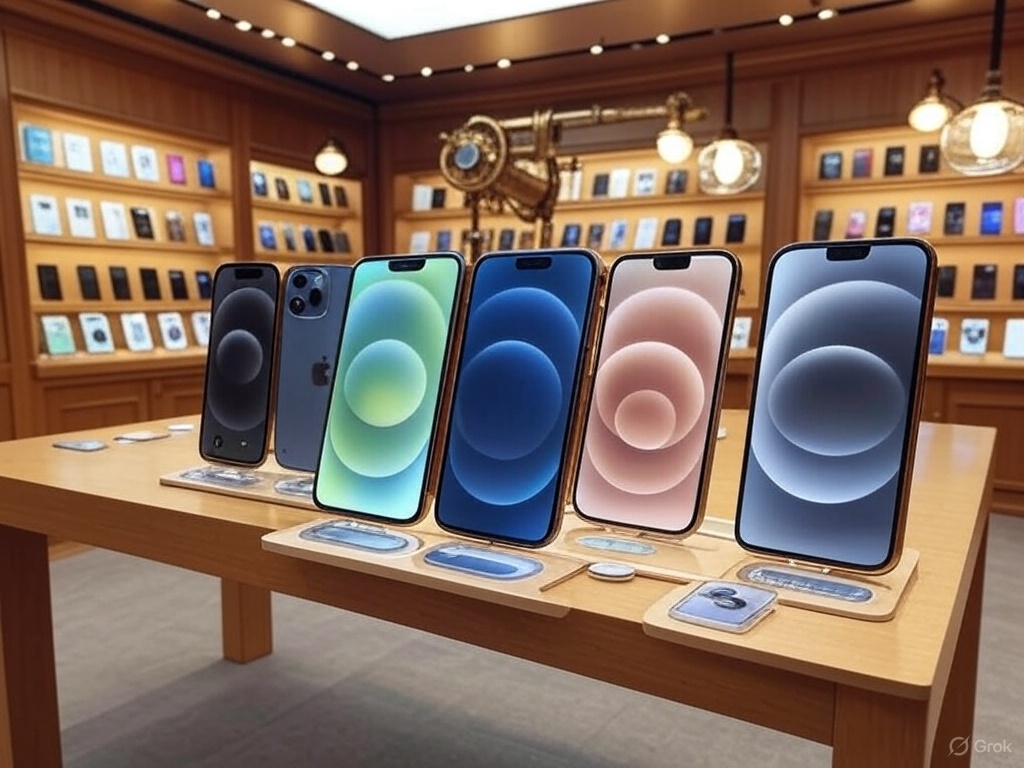In a move that’s already sparking debate, Apple is set to increase prices for its entire iPhone 17 lineup, slated for release this fall.
While the company is navigating a complex global trade landscape, Apple is framing the price hike as a reflection of cutting-edge innovations and advanced technologies rather than a response to ongoing U.S.-China trade tensions.
A Strategic Focus on Innovation
 Apple has long positioned itself as a leader in technological advancement, and the iPhone 17 series is expected to follow suit.
Apple has long positioned itself as a leader in technological advancement, and the iPhone 17 series is expected to follow suit.
Rumored features include a next-generation A19 chip, enhanced AI capabilities, and a redesigned Pro model with a thinner profile and improved display technology.
The company is also touting sustainability advancements, such as greater use of recycled materials and a carbon-neutral supply chain, as part of its justification for the price increase.
By emphasizing these innovations, Apple is steering clear of the politically charged narrative surrounding U.S.-China trade relations. CEO Tim Cook has consistently avoided taking sides in geopolitical disputes, and this approach allows Apple to maintain its global brand image while justifying higher costs to consumers.
Navigating Trade Tensions
The backdrop to Apple’s pricing decision is a fragile truce in the U.S.-China trade war. As of May 12, 2025, the two nations have suspended most mutual tariffs for 90 days to facilitate negotiations. However, the 20% tariffs imposed by the Trump administration on Chinese-made electronics remain in place.
 These tariffs have significantly impacted Apple’s bottom line, with Cook stating earlier this month that they could cost the company $900 million per quarter.
These tariffs have significantly impacted Apple’s bottom line, with Cook stating earlier this month that they could cost the company $900 million per quarter.
While these tariffs undoubtedly contribute to Apple’s rising production costs, the company is careful not to attribute the iPhone 17 price hike directly to trade policies.
Doing so could alienate consumers in both the U.S. and China, Apple’s two largest markets, and invite scrutiny from policymakers on either side of the Pacific.
What the Price Hike Means for Consumers
 Analysts predict that the iPhone 17 lineup could see price increases of 5-10% across all models, with the base iPhone 17 starting at around $849 (up from $799 for the iPhone 16) and the iPhone 17 Pro Max potentially exceeding $1,299.
Analysts predict that the iPhone 17 lineup could see price increases of 5-10% across all models, with the base iPhone 17 starting at around $849 (up from $799 for the iPhone 16) and the iPhone 17 Pro Max potentially exceeding $1,299.
While Apple’s loyal customer base has historically absorbed such increases, the hike comes at a time when global inflation and economic uncertainty may test consumer tolerance.
Competitors like Samsung and Google, which have kept flagship prices relatively stable, could capitalize on Apple’s move by offering more affordable alternatives. However, Apple’s ecosystem and brand loyalty are likely to mitigate any significant backlash.
 Also read:
Also read:
- Insiders Reveal Details of Apple’s First Foldable iPhone: iPhone 18 Fold Set for Fall 2026
- Apple expressed outrage over the emergence of the first porn app for iOS in Europe
- Apple’s Streaming Gamble: $1 Billion Annual Loss on High-Cost Projects Like Severance and F1
A Delicate Balancing Act
 Apple’s decision to raise iPhone 17 prices reflects a delicate balancing act. By focusing on technological breakthroughs and sustainability, the company aims to justify the increase without wading into the murky waters of international politics.
Apple’s decision to raise iPhone 17 prices reflects a delicate balancing act. By focusing on technological breakthroughs and sustainability, the company aims to justify the increase without wading into the murky waters of international politics.
Whether consumers will embrace the higher costs as the price of innovation remains to be seen, but Apple’s ability to navigate these challenges will be critical to maintaining its dominance in the smartphone market.
As the fall launch approaches, all eyes will be on Cupertino to see how Apple positions the iPhone 17 — and whether its innovation narrative can outweigh the sting of a heftier price tag.






